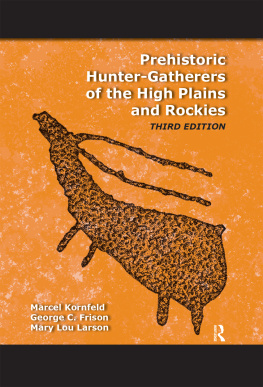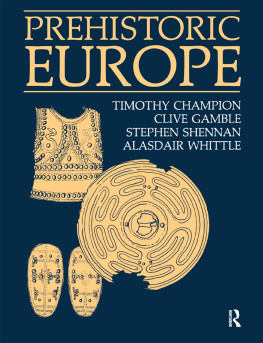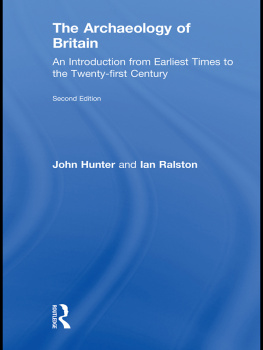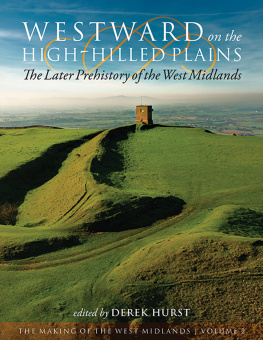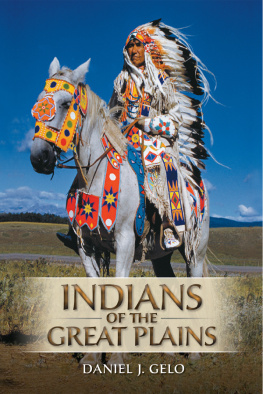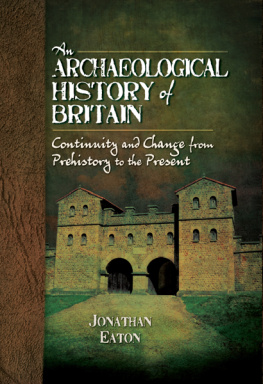
PREHISTORIC HUNTER-GATHERERS OF THE HIGH PLAINS AND ROCKIES
Third Edition | 
|
PREHISTORIC HUNTER-GATHERERS OF THE HIGH PLAINS AND ROCKIES
Third Edition | 
|
Marcel Kornfeld, George C. Frison, and Mary Lou Larson
WITH CONTRIBUTIONS BY:
Bruce A. Bradley, George W. Gill, Julie E. Francis, and James c. Miller

First published 2010 by Left Coast Press, Inc.
Published 2016 by Routledge
2 Park Square, Milton Park, Abingdon, Oxon OX14 4RN
711 Third Avenue, New York, NY 10017, USA
Routledge is an imprint of the Taylor & Francis Group, an informa business
Copyright 2010 Taylor & Francis
All rights reserved. No part of this book may be reprinted or reproduced or utilised in any form or by any electronic, mechanical, or other means, now known or hereafter invented, including photocopying and recording, or in any information storage or retrieval system, without permission in writing from the publishers.
Notice:
Product or corporate names may be trademarks or registered trademarks, and are used only for identification and explanation without intent to infringe.
New edition of Prehistoric Hunters of the High Plains by George C. Frison, published in 1991 by Academic Press under ISBN 978-0-12-268561-3
Library of Congress Cataloging-in-Publication Data:
Kornfeld, Marcel.
Prehistoric Hunter-Gatherers of the High Plains and Rockies / Marcel Kornfeld, George C. Frison, Mary Lou Larson; with contributions by Bruce A. Bradley [et al.]. 3rd ed.
p. cm.
Rev. ed. of: Prehistoric hunters of the High Plains / George C . Frison. 2nd ed. 1991
Includes bibliographical references and index.
ISBN 978-1-59874-467-5 (hardcover : alk. paper)
1. Indians of North AmericaHuntingGreat Plains. 2. Indians of North AmericaGreat PlainsAntiquities. 3. Great PlainsAntiquities. I. Frison, George C. II. Larson, Mary Lou, 1954- III. Bradley, Bruce A., 1948- IV. Frison, George C. Prehistory of the Plains and Rockies. V. Title.
E78.G73F74 2009
978dc22 2009037368
ISBN 978-1-59874-467-5 hardcover
CONTENTS | 
|
Bruce A. Bradley
Julie E. Francis
George W. Gill
James C. Miller
A Ph.D. dissertation entitled A Preliminary Historical Outline for the Northwestern Plains by William Mulloy was accepted by the Department of Anthropology at the University of Chicago in 1953 and later published by the University of Wyoming in 1958. Although supported by a limited database, it was a remarkable document reflecting a profound knowledge of anthropological and archaeological principles and is still widely used and quoted. The 1st edition of Prehistoric Hunters of the High Plains in 1978 was strongly influenced by Mulloys earlier work that strictly and artificially delineated the Plains from the Rocky Mountains and appeared to perceive a separation between prehistoric cultural groups living in these areas. Part of this thinking reflected a dearth of upland and higher-altitude investigations at that time.
Subsequent to this, new data began to suggest this separation was not well enough supported. By the time the 2nd edition of Prehistoric Hunters of the High Plains appeared in 1991, there was ever-increasing evidence of interaction between plains and mountain prehistoric cultural groups, as well as better anthropological understanding of hunter-gatherer settlement strategies. With the appearance of the 3rd edition, the database has now expanded, and is discussed in this book, to a condition that we believe demands the inclusion of the Rocky Mountains in the title.
Another revision with the 3rd edition is a change in emphasis. The first edition of this volume emphasized cultural chronology. Nearly 30 years after William Mulloy presented his A Preliminary Historical Outline for the Northwestern Plains, and after a great deal of research in the intervening time, it was necessary to reformulate the chronological scheme for the region. A significant amount of the research in these years focused on communal bison procurement and processing sites, hence these sites played a large role in the 1st edition. The 2nd edition continued refining the cultural chronology as new data inevitably raised temporal questions. That volume, however, focused on adaptive strategies of past High Plains and Rocky Mountain peoples, although bison procurement and processing was still emphasized. To be sure, data from these types of sites provided some of the most secure information for making inferences about the past. This 3rd edition continues to refine the thorny chronological issues that remain unresolved and continues to focus on adaptive strategies. However, in the nearly 20 intervening years since the 2nd edition, the archaeological database has doubled, tripled, or more. In addition to bison bone beds, we now have significantly more information on a wide array of botanical and zoological remains and their procurement, processing, and consumption to inform archaeological interpretations. Moreover, raw data and inferences detailing a great deal more about the richness and complexity of aboriginal life in the Plains and Rockies have come to light. In this volume, we begin the process of integrating these data into a more complete picture of prehistoric lifeways and sociocultural systems of the Northwestern Plains and Rocky Mountains.
Plains and Rocky Mountain archaeology continues to grow by leaps and bounds. Much of the material reported in this book has its origin in cultural resource management (CRM) and salvage projects of the past two decades. The number of archaeologists in the public sector has increased, federal agenciesnamely, the United States Forest Service, Bureau of Land Management, Bureau of Reclamation, and United States Fish and Wildlife Servicenow have numerous trained professionals in nearly all field offices and often several students for seasonal employment. University involvement in CRM and salvage projects has generally declined, at least as a percentage of total, and academic institutional involvement has waxed and waned. For example, the University of Colorado at Boulder (CU) and Colorado State University (CSU) have not been at the forefront of CRM for several decades, while the University of Denver has steadily increased its contract programs. However, archaeologists at both CU and CSU have continued to do research, train students, and work with the public. While CU remains focused on the Southwest and Mesoamerica, it maintains a secondary Plains and Rockies emphasis. To the north, Montana State University (MSU) has successfully integrated pure research and publicly funded research into its archaeological program, as has the University of Wyoming (UW), but MSU faculty have recently diversified beyond the original Plains and Rocky Mountain focus. The University of Montana contributed to Plains archaeology from the 1950s through the 1970s, but has shifted focus to other regions in the 1980s and 1990s. It may be coming back on track with new faculty hired over the last several years.
Next page
